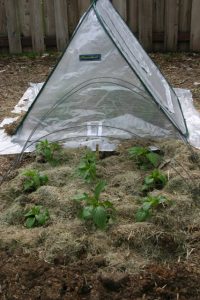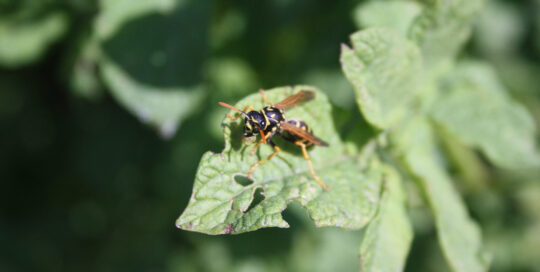Fungus problems on peppers
Views: 1612

The other day someone asked what my favorite vegetable was. My first thought was beets just because I’ve been eating an enormous amount lately. But in reality, even though we have them for such a short time throughout the year, I would have to say it’s the ‘Carmen’ Italian sweet pepper. So it’s not surprising that I planted 24 this year since we love to eat them fresh; plus, I want to pickle them like my friend, Chris, because they make a fabulous addition to sandwiches. Although peppers are typically pretty fuss-free, once and awhile, you’ll experience pest or disease issues, with fungi being the most likely candidate.
Fungal issues
Peppers like it hot and humid, but those conditions also make it a candidate for fungal issues. One of the most prevalent is powdery mildew caused by the Leveillula taurica fungus, and thankfully, is one that responds to treatment. Most of the time you’ll notice powdery mildew appearing on the undersides of the leaves when the peppers are starting to set. This is the time to do something about it.
While copper based fungicides have long been popular, more organic gardeners are turning to bicarbonates to stop the fungus. Baking soda (sodium bicarbonate) has long been a home remedy for powdery mildew. It is most effective when the solution is combined with a horticultural oil. Another promising concoction is a potassium carbonate, usually with a surfactant of some sort, that is useful not only on powdery mildew, but also black spot and leaf spot. (This is also good news for rose growers that have to deal with fungal issues.) You can find commercial mixes at most garden centers.
Southern blight
Southern blight is another significant problem caused by the soil borne Sclerotium rolfsii fungus. Not surprisingly, it usually appears in the summer during hot and humid conditions. Symptoms include wilted and discolored leaves (usually the lower ones first) and, ultimately, the death of the plant so this is serious stuff. If you suspect this is the issue, pull and dispose of the plants. Then you need to handle the soil situation starting with any of the tools you might have used on or around the diseased plants. If you have weeding tools or shovels you used in the area, clean them thoroughly before using them anywhere else to prevent spreading the fungus to a new area. And do not plant peppers, tomatoes, eggplant, or potatoes in the same area next year.
One option to eliminate the fungus is to solarize it by pulling over a sheet of clear plastic and pinning it down tightly. The top 2 inches of soil needs to reach 122 degrees F. in order to kill the fungus. If you live in a cloudy area, this might not work as well. Use a soil thermometer to check. You don’t want to spend the time doing it, only to have it fail.
Blossom End Rot
A lot of the issues in pepper plants revolves around various forms of fungi. I do need to remind everyone that a very common problem that is not a disease is blossom end rot. This is when the pepper is forming fine and looks great, but the end turns brown and mushy. It’s caused because the plant can’t use the calcium in the soil effectively, or there is not enough calcium in the soil. One of the best first steps to remedy this (since many soils are lacking in calcium) is to supplement it with a purchased calcium amendment or crush up egg shells and work them into the soil. They take a long time to be able to be assimilated, but it’s a good use for them.
Peppers are fabulous to eat fresh. There’s really no comparison between the ones you can buy in the store and the ones you grow at home. Homegrown peppers actually taste like they should!
Meet Amy Grisak
Amy is a freelance author and photographer in Great Falls, MT who specializes in gardening, foods, and sustainable agriculture. She provides information on every kind…
Amy's Recent Posts

Looking into the Crystal Ball for a Pest Report








